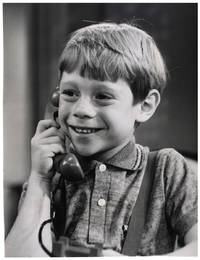No binding
1989 · Los Angeles, CA, USA
by Jim Thompson (source), Donald Westlake (screenwriter)
Paul Kohner. No binding. Near Fine. Los Angeles: Paul Kohner, 1989. Vintage original film script, 11 x 8 1/2" (28 x 22 cm.), plain wrappers, with title in holograph pencil on front wrapper, brad bound, 120 pp. Light tape stains on outer wrappers, overall near fine.
One of the most remarkable neo-noirs of the 1990s, and surely the best adaptation of a Jim Thompson novel filmed to date, The Grifters (1990) boasts an astonishing array of talent in front of the camera and behind it. It was produced by Martin Scorsese around the same time he was directing Goodfellas, one of his most critically and popularly acclaimed hits. Scorsese hired British filmmaker (truncated)
One of the most remarkable neo-noirs of the 1990s, and surely the best adaptation of a Jim Thompson novel filmed to date, The Grifters (1990) boasts an astonishing array of talent in front of the camera and behind it. It was produced by Martin Scorsese around the same time he was directing Goodfellas, one of his most critically and popularly acclaimed hits. Scorsese hired British filmmaker (truncated)






